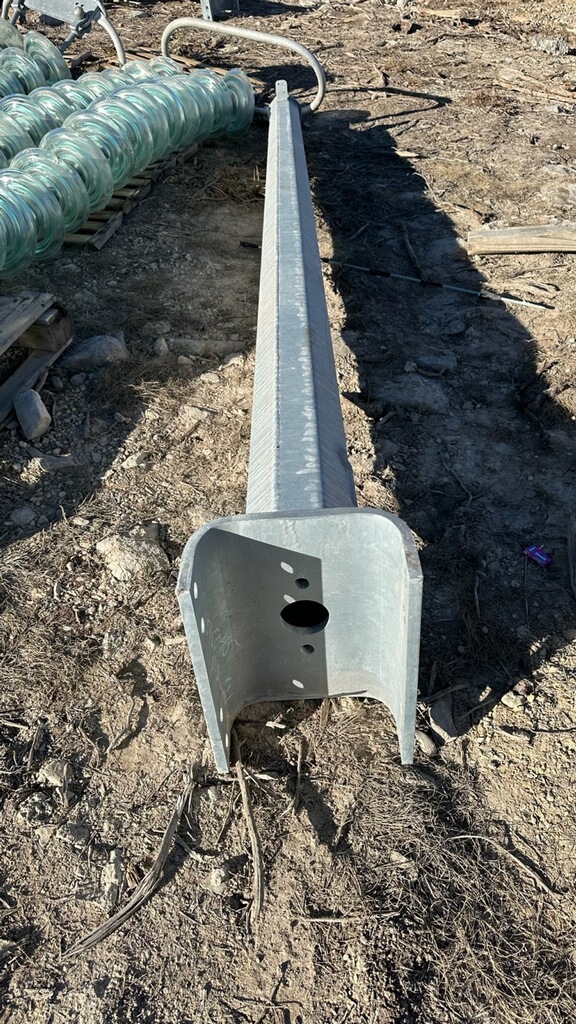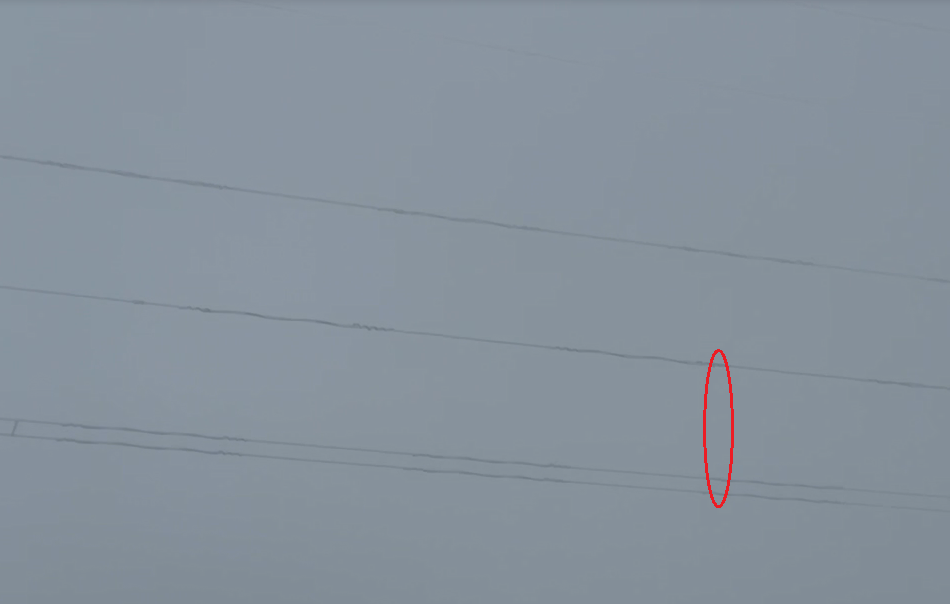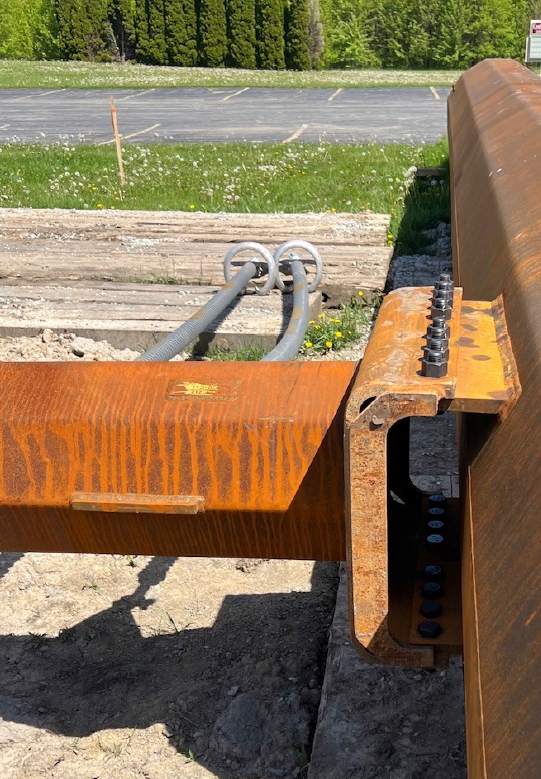CASE 1: Conductor with signs of stain or corrosion was installed (TX)
Issue: The contractor noticed some type of surface defect on the 1272kcmil ACSR Bittern conductor. Initially the subcontractor didn't say anything to anybody and went ahead to install the conductor. TLine FW345-TX
Solution: Southwire was contacted and confirmed a case of water staining. "When conductor reels are stored outdoors, water can accumulate on the conductor on the underside of the reel. If the water contains chemicals from the surrounded atmosphere, a black water stain can appear on the conductor. Water stains are a cosmetic issue; they have no adverse effect on the performance or service life of the conductor. In most environments, the conductor will darken in the first few months after the line is energized, and the stain will no longer be noticeable. Aluminum Association Technical Bulletin TR3, "Guidelines for Minimizing Water Staining of Aluminum" discusses this issue in detail and contains advice for avoiding water staining."
In summary, while aesthetically displeasing, the stains will have no adverse effect on the conductor.
Amarillo-TX
CASE 2: Jumper arm installed incorrectly on the wrong side. (TX)
Issue: The contractor installed the steel jumper arms on the wrong side of the 345kV steel pole.
Review: It was noted as a design-manufacture error by the vendor, not captured during their QA/QC nor the consultant review/approval.
Solution: Part of the external thru plate was cut and installed/welded on the opposite, right side of the pole. Schedule was a factor to resolve the issue quickly.
a.)Cut the thru plates off on the outside, 4.5" min from the edge. b.)Trim the cut part if necessary to the proper length, and double bevel the weld edges 45 degrees. c.)Remove the galvanizing coating from the butt ends of the thru plates. d.)Fit up the cut part to the thru plate butt ends, the bolt hole MUST be vertical inline and 3" from the shaft face. e.)After fitting up. weld up the cut parts to the thru plate butt ends. Clean the welded areas. f.)Touch up the welded areas with zinc rich paint per ASTM A780 requirement.
CASE 3: 345kV Steel Pole damaged while stringing conductors. (CO)
Issue: The top pole section, where the bracket attaches and is welded, was damaged/dented during the conductors stringing.
Solution: After a quick review with the manufacturer, the top section of the pole was decided to be replaced. Cost: $8,519+freight (Aug.2023)
CASE 4: Galloping occurrence on the new 345kV TLine (CO)
Issue: Outage occurred due to galloping effects on a new TLine a couple of months after energizing(Dec. 2023). Airflow Spoilers were already installed to avoid galloping on all East-West sections of the TLine where galloping was noted on another close in-service TLine.
Solution: It's under investigation. Possibly the whole line should have been considered to have airflow spoilers, not only the East-West sections.
Airflow spoilers installation (08.18.2023)
























